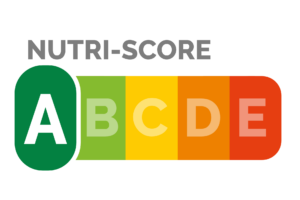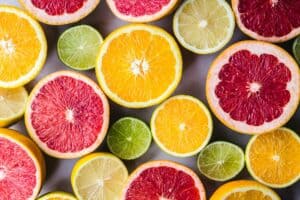Monster sugars — The Sweetening Journey (part 3 of 6)
Product development • Glucose syrup, isoglucose, and invert sugar are bulk sweeteners produced industrially through chemical processes during which starch or sugar is transformed into something that replaces the sweetness and volume of sugar. In this third article of six of our sweet journey, we learn more about these alternatives to sugar.
Our sweet journey continues. We have left sugars and sugar alcohols behind, and have now arrived at the third stop. Here we find a colourful mix of highly processed, sugar-like products. We’re talking about glucose syrup, isoglucose, invert sugar, and the like.
Bulk sweeteners
Ingredients that are about as sweet as sugar and that takes up about the same amount of volume are sometimes called bulk sweeteners. Sweeteners, as they bring sweetness to the product. Bulk, as they, just like sugar, have a relatively low sweetness in relation to their weight and volume and is therefore needed in larger amounts.
The sugar types and sugar alcohols we have already looked at in the previous article are examples of bulk sweeteners. But there are more of them. The remaining ones are produced industrially through chemical processes in which starch or sugar is transformed into something similar to sugar or syrup. In this article, we will look closer at four of them.
Glucose syrup is also known as just glucose. It’s a liquid blend that gets its sweetness from glucose, maltose and maltodextrin, which are all the result of splitting starch. Sometimes fructose is added to increase the sweetness.
Glucose-fructose syrup is a glucose syrup with more than 5 per cent added fructose but with more glucose than fructose. Not to be confused with fructose-glucose syrup.
Isoglucose is also called fructose-glucose syrup, high fructose corn syrup, or HFCS for short. It’s a liquid blend of glucose, fructose and maltodextrin, produced by splitting starch to glucose syrup and then turning maltose to fructose.
Invert sugar is a liquid blend of glucose and fructose, produced from regular sugar.
| Bulk sweetener | Sweetness | GI | Energy |
| Glucose syrup | 30–60 % | 90–150* | 4 kcal/g |
| Glucose-fructose syrup | 35–100 %* | 90–150* | 4 kcal/g |
| Isoglucose | 80–100 % | 81–95 | 4 kcal/g |
| Invert sugar | 120 % | 84 | 4 kcal/g |
| * Estimation in absence of a reliable source. | |||
Glucose syrup
Glucose syrup is produced from starch, which often comes from potatoes, wheat or corn.
Starch is chains of glucose molecules. By dissolving starch in water and adding acid or enzymes, or both, and heating the blend, starch is broken down into smaller chains of glucose molecules (maltodextrin) which in turn is broken down into even smaller ones, and so on. This is called hydrolysis.
The result is glucose syrup – a blend of glucose, maltose (two glucose molecules) and maltodextrin. Glucose syrup can thus be described as the result of hydrolysis of starch.
The quality of the glucose syrup is calculated as a percentage by mass of the dry matter. This percentage is called dextrose equivalent (DE).
Complete hydrolysis turns all starch into glucose (DE = 100) but also gives rise to bitter degradation products. Glucose syrup is most commonly used with DE = 42 and DE = 70. To be termed glycose syrup DE must be at least 20. At below 20, it is referred to as maltodextrin.
Glucose syrup is used more and more as it’s cheaper than sugar. It is also used to prevent crystallisation of regular sugar, to increase viscosity and to preserve moisture.
Glucose-fructose syrup
Glucose is less sweet than regular sugar. To compensate this there is a glucose syrup with added fructose, which is sweeter than regular sugar.
If the glucose syrup contains more than 5 per cent fructose but the level of glucose is larger than the level of fructose, the result is called glucose-fructose syrup. All counted as dry matter.
Isoglucose (fructose-glucose syrup)
Glucose syrup is also the starting point for the production of isoglucose, also known as fructose-glucose syrup. Isoglucose which is produced from starch from corn is called corn syrup, or HFCS (high fructose corn syrup).
The production of isoglucose starts with starch which is hydrolysed with acid and two different kinds of enzymes. The result is glucose syrup, to which enzymes are added which cause the atoms to realign so that the glucose turns into fructose. This is called isomerisation.
The result is an isoglucose which consists of 42 per cent fructose, 50–52 per cent glucose and 6–8 per cent maltodextrin.
With high-performance liquid chromatography, the level of fructose can be concentrated to 90 per cent. This is rarely used in foods.
Finally, you can blend a 42 per cent isoglucose and a 90 per cent isoglucose to a blend with 55 per cent fructose. This blend is most similar to sugar in sweetness. It’s used in for example sodas.
Invert sugar
Invert sugar is also a blend of glucose and fructose. It’s produced in a similar way to glucose syrup but starts with regular sugar instead of starch.
Regular sugar has molecules that are composed of glucose and fructose. By dissolving sugar in water and adding acid, enzymes, or both, and heating the blend, the sugar is broken down into glucose and fructose.
The result is invert sugar, consisting of 50 per cent glucose and 50 per cent fructose. Invert sugar can thus be described as the result of hydrolysis of regular sugar.
Invert sugar is industrially produced as a 65–73 per cent aqueous solution.
Invert sugar is just as sweet as regular sugar, but it has a better preservative function than saccharose. It’s also used to control crystallisation in sugar confectionery products.
Worse than regular sugar
Glucose syrup and isoglucose are cheaper than regular sugar. Invert sugar is more expensive but has a better preservative function, limits crystallisation and has another few aces up its sleeve. So that makes bulk sweetener better than regular sugar, doesn’t it?
Absolutely not!
From a health perspective, they are even worse than regular sugar.
Strictly, glucose syrup has the same number of calories as regular sugar, but as glucose syrup only has 30–60 per cent of the sweetness of regular sugar, you need up to 2.5 times more glucose syrup than sugar to get the same sweetness. This means 2.5 times more calories.
When it comes to GI it gets even worse. Glucose syrup consists practically exclusively of the two regular sugar types which have a higher GI than regular sugar. Glycaemic index for glucose is 138 and for maltose 150. That’s 50 and 63 per cent respectively, higher than regular sugar.
Isoglucose and invert sugar are both a blend of about equal parts glucose and fructose – just like regular sugar. But where regular sugar is digested in your body, isoglucose and invert sugar are digested in the factory. The glucose and fructose are freed and can easily be digested by the body, where they will increase the blood sugar level and turn into fat, respectively.
‘Monster sugars’
More and more consumers are avoiding highly processed bulk sweeteners. It’s not the high level of processing that goes into producing them that is the scariest part, but new research that in media is presented as alarming reports on ‘monster sugars’.
Terrifying stuff! Let’s keep looking.
In our next article, the journey continues. Then we will look at artificial sweeteners.
Don’t miss the other articles in the Sweetening Journey collection!
Please, share this article if you liked it.
[et_social_share]






